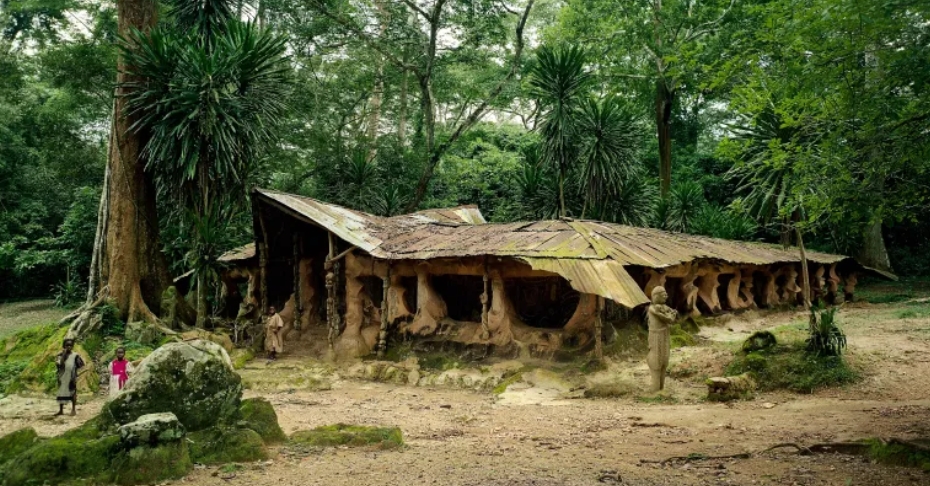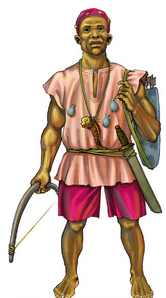
support@yorubalibrary.com
+2348073529208, 07038599574

Yoruba historical sites and landmarks are a testament to the rich heritage and cultural legacy of the Yoruba people. These sites offer insights into the history, architecture, and traditions of the Yoruba civilization. This article explores some of the most significant Yoruba historical sites and landmarks, highlighting their importance and what they represent.
The Significance of Yoruba Historical Sites
Yoruba historical sites and landmarks are crucial for understanding the evolution of the Yoruba people. They provide a glimpse into the past, showcasing the achievements, struggles, and spiritual beliefs of the Yoruba. These sites are not just remnants of history but are actively preserved and celebrated as symbols of Yoruba identity and pride.
Ile-Ife: The Cradle of Yoruba Civilization
Ile-Ife is often referred to as the cradle of Yoruba civilization. It is believed to be the place where the world was created according to Yoruba mythology. Ile-Ife is home to several historical sites and landmarks that are central to Yoruba history and spirituality.
Ooni's Palace
The Ooni's Palace is the traditional residence of the Ooni, the spiritual leader of the Yoruba people. The palace is an architectural marvel, featuring intricate carvings and designs that reflect Yoruba artistry. It is also a center for cultural and religious activities.
Ife Museum
The Ife Museum houses numerous artifacts, including terracotta sculptures, bronze heads, and other relics from ancient Yoruba civilization. These artifacts offer valuable insights into the art, religion, and daily life of the early Yoruba people.
Oyo Empire: A Historical Powerhouse
The Oyo Empire was one of the most powerful and influential Yoruba kingdoms. Its capital, Oyo-Ile, is rich in historical landmarks that reflect the empire's grandeur and military prowess.
Old Oyo National Park
Old Oyo National Park preserves the ruins of Oyo-Ile, the former capital of the Oyo Empire. Visitors can explore ancient walls, palaces, and shrines, gaining a sense of the empire's historical significance and architectural achievements.
Alaafin's Palace
The Alaafin's Palace in present-day Oyo is the traditional seat of the Alaafin, the ruler of the Oyo Empire. The palace is a magnificent structure, showcasing Yoruba architectural styles and serving as a cultural hub for festivals and ceremonies.
Osogbo: The Sacred Grove
Osogbo is renowned for the Osun-Osogbo Sacred Grove, a UNESCO World Heritage site. The grove is a sacred forest along the banks of the Osun River and is an important center for Yoruba spirituality and culture.
Osun-Osogbo Festival
The annual Osun-Osogbo Festival is a major cultural event that attracts thousands of visitors. It celebrates the river goddess Osun and features rituals, music, dance, and other cultural displays. The festival underscores the deep spiritual connection between the Yoruba people and their natural environment.
Sacred Shrines and Artworks
The Sacred Grove is home to numerous shrines, sculptures, and artworks dedicated to the goddess Osun and other deities. These creations are masterpieces of Yoruba art, blending natural and supernatural elements to create a harmonious spiritual landscape.
Badagry: The Door of No Return
Badagry is a coastal town with a poignant history as a major slave port during the transatlantic slave trade. Today, it stands as a reminder of this dark chapter in history and a symbol of resilience and remembrance.
Badagry Heritage Museum
The Badagry Heritage Museum documents the history of the slave trade, featuring artifacts, documents, and exhibits that tell the stories of those who were enslaved. The museum serves as an educational resource and a place of reflection.
The Point of No Return
The Point of No Return is a historical landmark where enslaved Africans were taken to ships bound for the Americas. A walk along the slave route and a visit to the memorial site offer a powerful reminder of the past and a tribute to the strength and endurance of those who suffered.
Conclusion
Yoruba historical sites and landmarks are rich repositories of history, culture, and spirituality. From the ancient city of Ile-Ife to the poignant memorials in Badagry, these sites offer invaluable insights into the Yoruba people's legacy. Preserving and promoting these landmarks ensures that the rich heritage of the Yoruba people continues to inspire and educate future generations.

Learn about the Yoruba concept of Ìwà Pẹ̀lẹ́ (good…

Learn special praises for Divine Being and Creator…